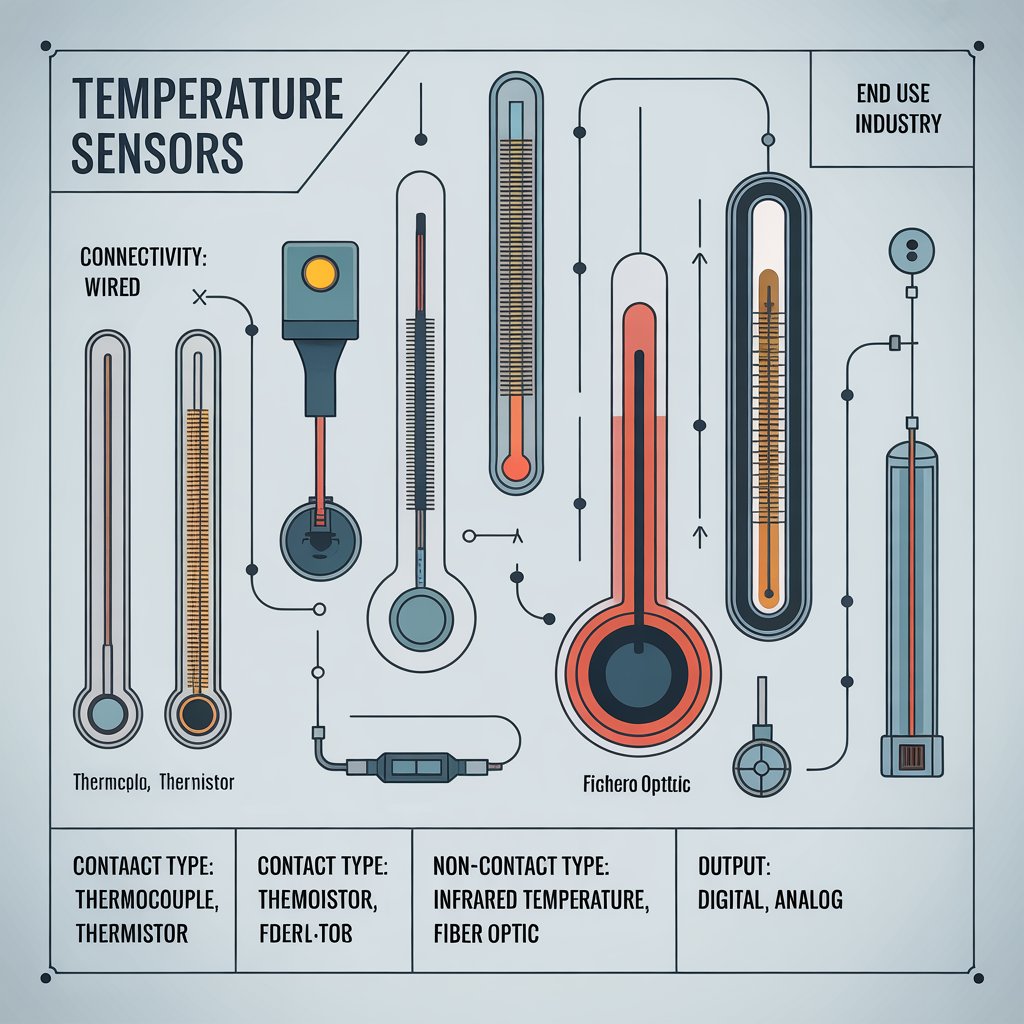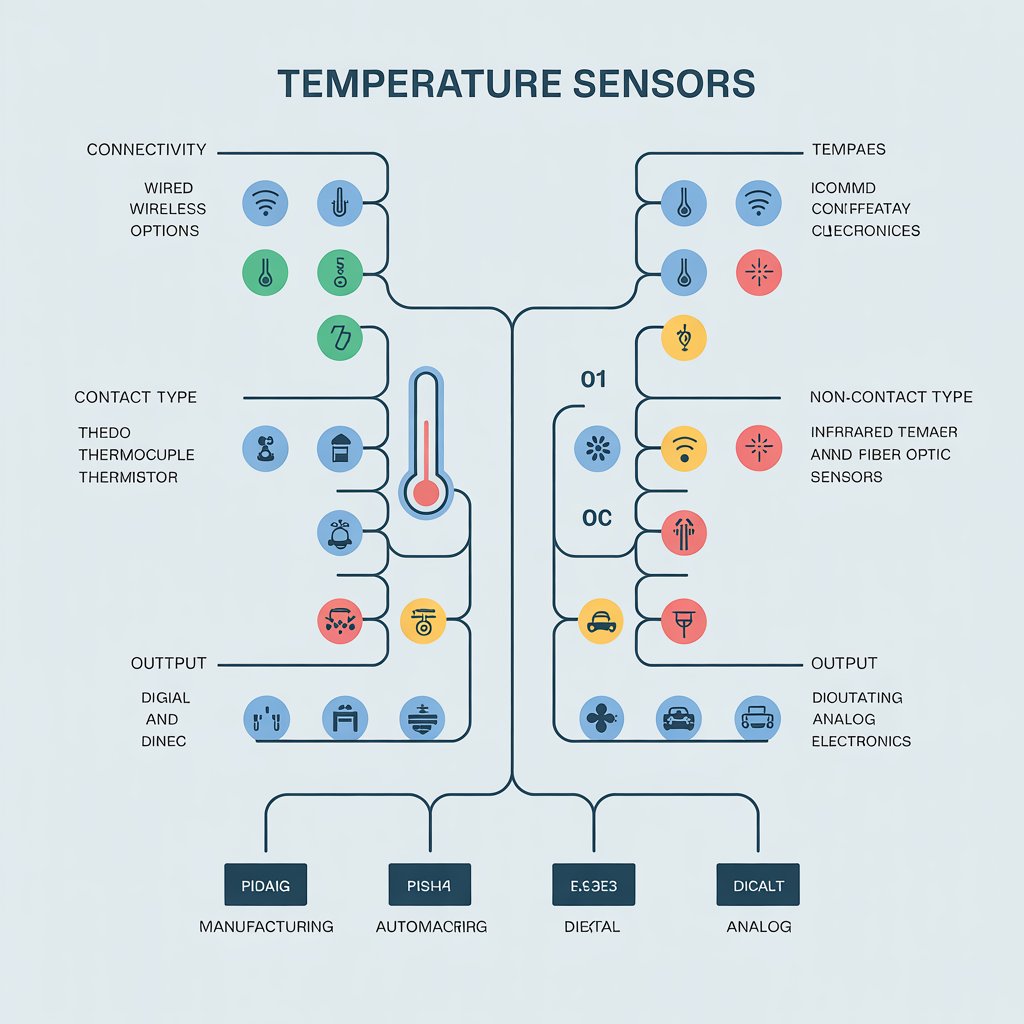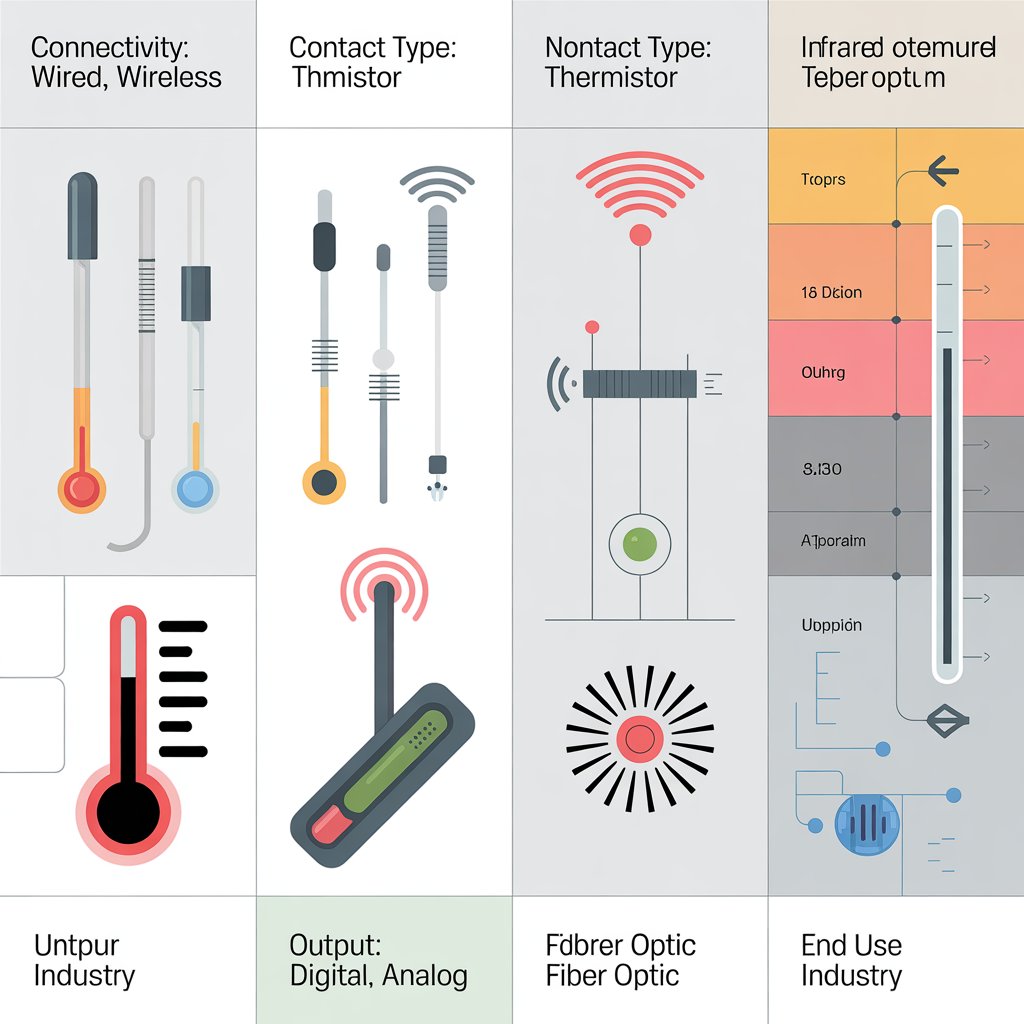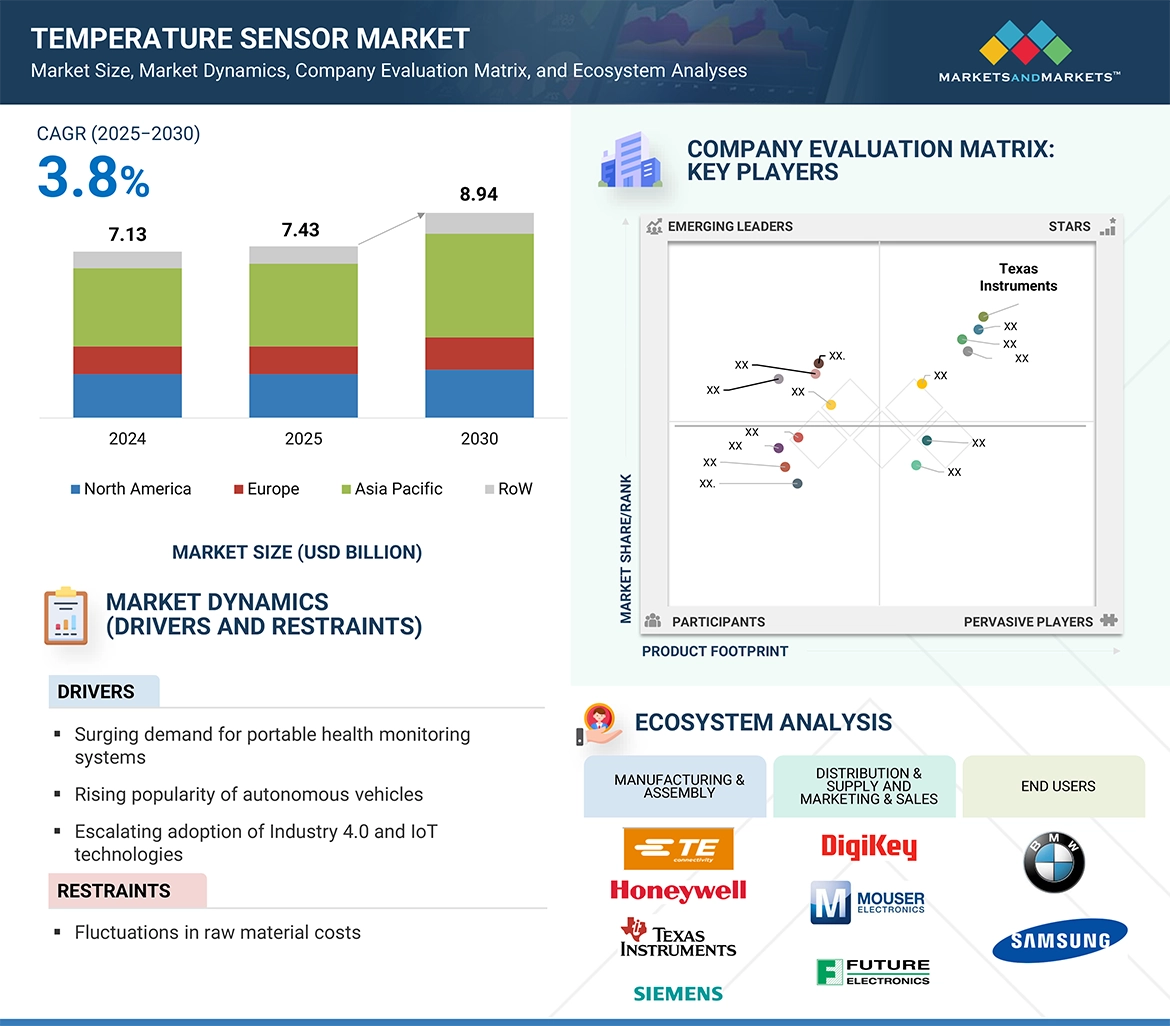The global temperature sensor market is entering an exciting phase of transformation and expansion, driven by rapid technological advancements, growing industrial automation, and the increasing need for precise thermal management. Temperature sensors, which play a critical role in monitoring and controlling heat across diverse applications, are now integral to the functioning of modern industries such as healthcare, automotive, consumer electronics, energy, and manufacturing. As global industries embrace digital transformation and sustainability, temperature sensing technologies are becoming smarter, more accurate, and more versatile. This evolution is unlocking new opportunities for market growth and innovation worldwide.
Download PDF Brochure: https://www.marketsandmarkets.com/pdfdownloadNew.asp?id=522

The Expanding Scope of Temperature Sensing Technologies
The demand for temperature sensors is expanding far beyond traditional industrial and laboratory applications. The proliferation of connected devices, smart systems, and automation solutions has elevated temperature measurement from a simple monitoring tool to a crucial component of intelligent decision-making. Sensors are now embedded in everything from smartphones and smartwatches to autonomous vehicles and renewable energy systems, where they ensure efficiency, safety, and performance optimization.
In healthcare, for example, temperature sensors are essential for patient monitoring systems, wearable health devices, and the storage and transportation of vaccines and medicines. The global focus on health and wellness, coupled with the rise of telemedicine and remote diagnostics, has created new opportunities for innovative sensing solutions. Similarly, the automotive industry is witnessing a surge in sensor demand due to the electrification of vehicles, where maintaining optimal battery and engine temperatures is critical for performance and safety.
Technological Advancements Fueling Market Expansion
The growth of the temperature sensor market is closely tied to technological innovation. Advancements in semiconductor materials, microelectromechanical systems (MEMS), and nanotechnology are enabling the development of sensors with higher precision, faster response times, and lower power consumption. The integration of artificial intelligence (AI), Internet of Things (IoT), and wireless communication technologies is transforming temperature sensors into intelligent devices capable of real-time data transmission and predictive analysis.
Infrared (IR) and fiber optic sensors are among the fastest-growing segments in the market. Their non-contact sensing capabilities make them ideal for applications where direct measurement is impractical or unsafe, such as in high-temperature manufacturing, aerospace systems, and medical diagnostics. Additionally, digital temperature sensors that can communicate with control systems and cloud-based platforms are gaining popularity due to their compatibility with modern smart infrastructures.
Inquiry Before Buying: https://www.marketsandmarkets.com/Enquiry_Before_BuyingNew.asp?id=522

Opportunities in Industrial Automation and Smart Manufacturing
Industrial automation is one of the most promising areas for temperature sensor growth. As factories evolve into smart manufacturing facilities, the need for real-time monitoring and process optimization is intensifying. Temperature sensors are used to regulate machinery, detect overheating, and ensure the consistency of production processes. Predictive maintenance, a core feature of Industry 4.0, relies heavily on sensor data to identify potential equipment failures before they occur.
The global emphasis on energy efficiency and sustainability is also driving sensor adoption in manufacturing and power generation. Temperature sensors help optimize energy consumption by controlling heating and cooling systems more accurately, reducing operational costs, and minimizing environmental impact. As industries continue to pursue carbon neutrality, the integration of smart temperature sensing technologies into energy management systems is expected to rise significantly.
Rising Demand in Consumer Electronics and Smart Devices
The consumer electronics sector represents another major opportunity for temperature sensor manufacturers. With the growing popularity of compact, high-performance gadgets such as smartphones, laptops, wearables, and gaming consoles, effective thermal management has become a critical design priority. Temperature sensors ensure that these devices operate within safe temperature limits, preventing overheating and extending product lifespan.
Smart home technologies, including intelligent thermostats, air conditioners, and energy management systems, rely heavily on temperature sensors to maintain comfort and efficiency. As consumers become increasingly focused on convenience, energy conservation, and connected living, the demand for advanced temperature sensing solutions is expected to grow exponentially.
Emerging Markets and Regional Growth Prospects
Geographically, Asia-Pacific continues to lead the global temperature sensor market, driven by rapid industrialization, technological adoption, and strong manufacturing bases in China, Japan, South Korea, and India. The region’s robust automotive and electronics industries are fueling continuous innovation and investment in sensor technologies. North America and Europe also remain vital markets due to their focus on advanced manufacturing, renewable energy, and stringent environmental and safety regulations.
Emerging economies in Latin America, the Middle East, and Africa are presenting new opportunities as they invest in infrastructure, energy, and healthcare modernization. Governments in these regions are increasingly supporting industrial development and smart city projects, which will further boost the demand for reliable temperature monitoring systems.
View detailed Table of Content here – https://www.marketsandmarkets.com/Market-Reports/temperature-sensor-market-522.html
 Challenges and the Road Ahead
Challenges and the Road Ahead
Despite its strong growth trajectory, the temperature sensor market faces challenges such as pricing pressure, integration complexities, and the need for continuous innovation to meet diverse industry requirements. Maintaining accuracy in extreme conditions and ensuring sensor reliability in harsh environments remain technical hurdles for manufacturers. However, these challenges are also driving research into more robust materials and advanced calibration techniques, creating long-term growth potential.
As global industries continue to transition toward automation, sustainability, and connectivity, the role of temperature sensors will only become more significant. The future will see sensors that are smaller, more energy-efficient, and more intelligent, capable of seamless integration into complex digital ecosystems. Manufacturers that invest in innovation, customization, and global partnerships will be best positioned to capitalize on the expanding opportunities in this dynamic market.

